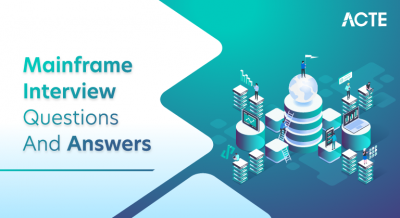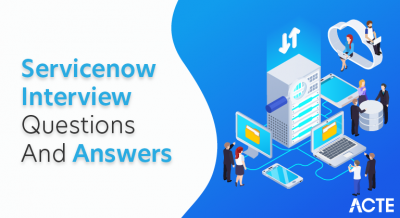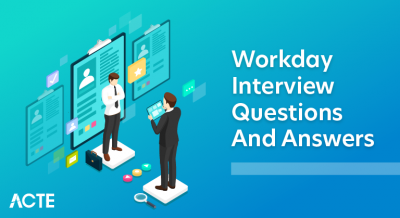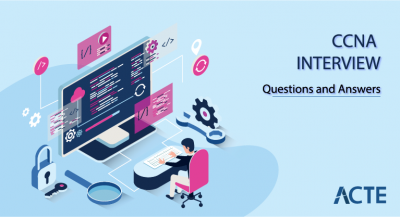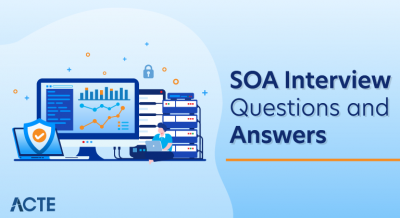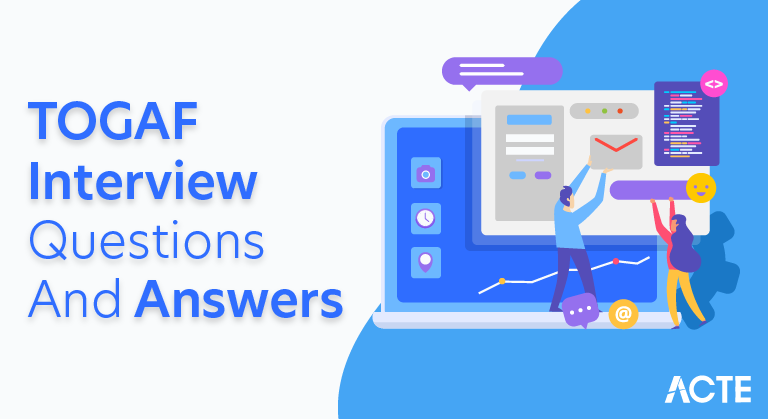
TOGAF is an enterprise architecture framework by The Open Group, guiding design and management processes. Its core is the Architecture Development Method (ADM) for systematic architecture creation. The Enterprise Continuum classifies and organizes artifacts, aiding in their reuse. An Architecture Repository stores and manages architecture-related assets. TOGAF emphasizes governance, ensuring compliance with standards and effective oversight. Reference models like the TRM offer templates for common architectural activities.
1. What is Enterprise Architecture?
Ans:
An Enterprise Architecture is a collection of strategic information which describes a business and the technologies and the information that is required for operating business. It covers description of business processes, roles, goals, organizational structures, applications, and systems. Information needed to implement new technologies to fulfill evolving business requirements is contained in the enterprise architecture.
2. What makes enterprise architecture so important?
Ans:
The goal of enterprise architecture is to optimize the typically dispersed legacy of processes into an integrated environment that supports the delivery of business operations and is adaptable to change.The key to the business’s success and the essential strategy for gaining a competitive edge is IT’s effective management and operation of details. This requirement is satisfied by the enterprise architecture, which offers a deliberate framework for the creation of IT systems in response to the constantly shifting needs of the business.
3. Explain Enterprise Architecture Roadmap?
Ans:
An Enterprise Architecture Roadmap outlines a present and the target architecture as well as transition plan for attaining the target. It must cover data, business, application, and technical architecture for an every state. The projects required to put the suggested architecture into practice are enumerated in the roadmap.
4. What is Togaf?
Ans:
TOGAF stands for Open Group Architecture Framework. It is the framework for enterprise architecture. It offers overall approach for designing, planning, implementing, and governing an enterprise architecture. Togaf designed a Enterprise into four levels: Application, business, data, and technology.
5. Why should adopt TOGAF?
Ans:
- It is freely available
- It is most widely adopted
- It avoids the reinventing the things
- It is based on practices
- It can be customized as per requirements of the organization.
6. What are the benefits of Togaf?
Ans:
- Procurement specifications will be met by firms who use the Togaf for architecture planning and execution.
- It minimizes a risks and costs involved in developing an Enterprise.
- An important benefit of implementing Togaf framework is that it can be customized based on requirements of an organization.
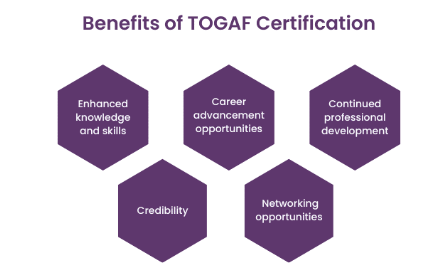
7. Explain architectural domains of Togaf?
Ans:
Togaf framework includes the four main architectural domains: Application, business, data, and technology.
Application architecture: It is in charge of putting together the ordered overview of each application system.
Business architecture: It is used to determine the main business operations, term governance, and business strategy of an organization.
8. Explain parts of Togaf document?
Ans:
The Togaf document contains a seven parts. They are as follows:
Introduction: Fundamental concepts of an enterprise structure are introduced in this part. It outlines terms that are used overall Togaf and provides the modification details of previous and current versions of Togaf.
ADM: Architecture Development Method is referred to as ADM. It is a crucial component of Togaf.
9. What is SOA?
Ans:
Designed to create a suite of adaptable, interoperable, and reusable services, SOA is a set of design principles.These design concepts include service abstraction, discoverable service contract, loose coupling, service reusability, service statelessness, service autonomy, and service composability.
10. What is ITIL?
Ans:
Information Technology Infrastructure Library is what ITIL stands for. It is a collection of industry best practices for service management, operations, and development of IT.It contains activities, procedures, and checklists that may be tailored for any type of company and offers a thorough explanation of many key IT concepts.
11. Explain Zachman Framework?
Ans:
Zachman Framework is Enterprise Architecture framework that was developed by the IBM during the 1980s. It allows the way to define an enterprise based on a 6×6 matrix of architecture documentation. The questions like what, when, where, why, who, how are asked by a matrix columns. These questions are examined at many levels of detail, including conceptual, contextual, physical, logical, and detailed, in the rows.
12. How to assess if a solution aligns with enterprise architecture?
Ans:
The involvement of projects during an initial phase is important to make sure that architecture compliance processes are covered in the project planning. When solution architecture is defined, the compliance assessment must be carried out. The compliance assessment guarantees project compliance to the enterprise architecture defined. It is the chance to involve project members and obtain feedback for an enterprise architecture.
13. What is Togaf Architecture?
Ans:
According to ISO/IEC 42010:2007, an architecture is a system’s fundamental arrangement, encompassing all of its constituent parts, their interactions with one another and the surrounding environment, and the guiding principles that guided its creation and development. This definition is supported by a TOGAF while maintaining consistency with terminology of ISO/IEC 42010:2007 but sees significance of architecture in a different way depending on a context used.
14. What is Architecture vision?
Ans:
During initial phase of the project, architecture vision is created. The vision aims to agree right from beginning on the desired result for the architecture. It is the elevator pitch of an enterprise architecture. It must sell the benefits of proposed architecture simply and powerfully to decision-makers.It should also show how the suggested architecture advances the company’s goals, strategy, and stakeholder concerns and objectives.
15. Explain SOA patterns.
Ans:
File gateway: It is placed in between a service and the legacy flat file. The gateway will act as amediator and may carry out data transformations
Enterprise Service Bus: This technology facilitates service communication by offering data transformations, dependable messaging, messaging queuing, and service broker functions.
16. Explain a terms related to Views?
Ans:
It system a set of components designed for providing the particular function or a set of functions.
Architecture: It is a fundamental arrangement of the system’s parts, their interactions with one another, and the design and growth principles.
Stakeholders: the individuals or groups for whom have key roles and concerns within the system.
17. How does Togaf create importance as skeleton for enterprise architecture?
Ans:
Togaf was developed through collective initiatives of more than 300 member firms of Architecture Forum of some of the world’s top companies. The use of TOGAF results in the consistent business style, meeting the requirements of stakeholders, using the optimal technique, and offers due to the factors to be taken into consideration both the current and future company requirements.
18. Explain Preliminary Phase?
Ans:
The preliminary phase will prepare organization to build the architecture, guaranteeing that: Involvement in a process- Scope and assumptions are defined, Principles and constraints are defined. The development team developed a Framework, and the methodologies are recognized and Criteria established.
19. How would these principles be applied in the Enterprise?
Ans:
The principles are applicable to an Enterprise by:
- Offering the framework for making informed decisions about the IT Establishing appropriate assessment criteria.
- Driving functional requirements definitions of architecture offering input to evaluate existing IS/IT systems and future strategic portfolios.
- Stress the value of specific architecture in a rationale statements.
20. What is provided in architecture content framework?
Ans:
Together with artifacts, deliverables, and architectural building blocks, it offers comprehensive architectural work product models.
- It leads to be higher reliability in TOGAF output.
- It provides an inclusive evidence for structural design outputs.
- It promotes a better integration of work machine.
21. How Zachman Framework used by Enterprise Architects?
Ans:
Zachman is a kind of classification compared to EA model. And ensure that the packages have the right generation of supporting papers to enable the creation of the NIC check catalog. Zachman works better for informational programs than for different kinds of EA evaluation tasks.It works well with the number of different EA architectures, such as TOGAF.
22. What are steps in Architecture Development Method(ADM)?
Ans:
- Select perspectives, orientation figures, and apparatus.
- A Baseline production structural design pictures should be manufactured.
- Assemble information about structural design of intention manufacturing.
- Take action when the crack breaks.
- Label how nominee’s roadmap works.
- Determination of collision transversally in a background of the infrastructure.
23. What is included in transition architecture?
Ans:
- Work package portfolio
- Milestones implementation factor
- Opportunity portfolio
- Assessment and deduction matrix
- Dependencies matrix
- Consolidated gaps.
24. What are inputs for migration planning phase?
Ans:
The migration planning phase involves defining business goals, assessing current infrastructure, and ensuring regulatory compliance. A communication plan, budget considerations, and timeline are crucial for success. Additionally, determining the technology stack, planning testing, and thorough documentation contribute to a streamlined and effective migration process.
25. What are requirement management process outputs?
Ans:
- Requirements specification
- Requirements impact assessment
- Updated requirements repository
- Updated architecture.
26. Security activities in technology architecture phase of ADM?
Ans:
- Evaluate a security-specific architecture elements from the basic perspective.
- Revise assumptions with respect to the interconnection systems.
- Identification and evaluation of the applicable guidelines and standards.
27. What are phases of ADM?
Ans:
Preliminary phase: Getting an organization ready for a successful architecture project is the focus of this phase.
Requirements management: Makes sure that each phase of TOGAF project is according to business requirements
28. How requirements reduced after production?
Ans:
After a product is in production, requirements are generally not reduced. Instead, changes may occur based on user feedback or evolving business needs, but these adjustments are typically managed through change processes rather than a reduction in initially defined requirements.
29. How are scheduling times defined in material master record?
Ans:
The scheduling times are defined in material master record by entering in-house production time. This value updated as a result of the system routing. enter configuration, processing, tear down, and an interoperation time. If these values are be retained, system will determine an internal production time in accordance with the lot size.
30. Why is TOGAF important?
Ans:
TOGAF plays the vital role in demystifying the architecture development process. It enables the IT users to build open systems-based solutions as per business requirements. The TOGAF standard provides the best practice framework for an organizations to create economic and workable solutions.
31. What is TOGAF framework?
Ans:
The enterprise architecture framework is called the Open Group Architecture Framework (TOGAF). It provides the comprehensive approach to the design, planning, implementation, and governance of enterprise architecture.
32. What are contents of Transition Architecture?
Ans:
The contents of Transition Architecture are:
- Opportunity portfolio
- A Work package portfolio
- An Evaluation of Milestones Implementation Factors.
33. Explain TOGAF TRM with Two recognized Applications?
Ans:
There are the people scratching heads on what; The Open Group Architecture Framework (TOGAF) signifies. and while TOGAF is generally known to a people in its industry, the very concept of it makes it something that is worth knowing even if person is not part of that industry. TOGAF for everyone’s information needs is existing framework that is meant for an Enterprise Architecture, which involves providing of comprehensive approaches to design, implementation, and planning of enterprise information based on the architecture.
34. Explain View model – Federal Enterprise Architecture views?
Ans:
The three types of architecture are outlined in the Federal Enterprise Architecture Practice Guidelines (2006): Enterprise design, Segment design, and Solution design.Enterprise Architecture (EA) is basically worried about a recognizing commonplace either split resources – if arestrategic plans, trade actions, ventures, information, structures, either technology.The main investors for a section design are trade holders and administrators. Segment design is associated with the EA via 3 principles: construction, recycle, and orientation.
35. Explain Enterprise engineering
Ans:
This includes “the program of understanding, truths, and areas associated with the analysis, planning, execution, and management of the entire set of components related to an organization.”
36. How does Enterprise Architecture provide competitive advantage?
Ans:
- Primarily taking in the construction and severity in the developing/maintaining organization applications.
- Alignment with Business Objectives
- Efficient Resource Utilization
- Agility and Innovation
- Streamlined Business Processes.
37. What is example of good enterprise architecture vision or mission statement?
Ans:
Both assignment declarations’ EA apparitions should genuinely be on par with the organization as a whole.Describing a design of an organization seeks firstly to improve the success or an effectiveness of the trade itself. This involves business construction innovations, trade action centralization or federation, timely and high-quality company information, and ensuring that money spent on information technology (IT) is appropriate.
38. What are skills and qualities required to be good business analyst?
Ans:
The most essential ability for trade Analyst is information exchange. This is since trade Analyst behaves like organizer amid investors in quantities of dissimilar parts, and straddles business/technology split.It’s as well essential to have the definite quantity of understanding in a sections external to the trade examination itself. This contains a program administration, change administration, organization design, SDLC, and trade procedure modeling.
39. What is TOGAF Contain?
Ans:
There are the two main parts of TOGAF:
TOGAF Architecture Development Method (ADM): It deals with the deriving an organization-specific IT architecture meeting business requirements.
TOGAF Foundation Architecture: An architecture of a generic functions and services provides the foundation on particular architecture and architectural building blocks that can be built.
40. How TOGAF creates importance as skeleton for enterprise architecture?
Ans:
Almost 300 member firms of the Architecture Forum, representing some of the top corporations in the world, collaborated to design TOGAF. By using TOGAF, businesses can adopt a consistent business style that employs the best possible technique, reflects stakeholder requirements, and gives fair consideration to both current and future business requirements.
41. Who ultimately enjoys the benefits of TOGAF?
Ans:
The rebellion will profit from the usage of TOGAF if any organization has developed and completed a structural design for the upkeep of trade.Businesses seeking the Borderless Info Run could utilize TOGAF to define and implement the framework and also the steps necessary to enable access to integrated information both within and between endeavors.
42. Explain a groundbreaking thought used to get solution of any error in project?
Ans:
Industry privileged people are much more likely to count on a modern technology to boost yields and services than possible. According to CEB data, the majority of technology investment in a typical organization occurs outside of IT, therefore planners need to be flexible enough to support these novel concepts, many of which involve more advanced methodologies.
43. How did you convince someone to analyze and ensure their confidence?
Ans:
The number of people involved with machinery pronouncements is increasing, which suggests that architects must collaborate with a distinct set of stakeholders, each of which has their own objectives and sources of inspiration. Architects must possess strong influence in order to ensure that EA fulfills its objectives. However, many fail to reach the top. According to CEB data, just 35% of them have an impact on stakeholders.
44. What are architecture content framework provide
Ans:
- It is capable of providing a model of architectural work products in detail, along with artifacts, deliverables and architectural building blocks.
- It drives for a greater reliability in output of TOGAF.
- It offers the inclusive proof of structural design results.
45. Explain importance of TOGAF in developing IT architecture.
Ans:
- A methodology for a creating, managing, and governing an Enterprise Architectures.
- It promotes the consistency, interoperability, and integration across organisations.
- TOGAF emphasises importance of enterprise-wide integration and agility.
- It offers the valuable resources, best practices, and certification for professionals.
46. Explain Gap Analysis.
Ans:
Gap Analysis is the methodical assessment that compares a current state of an organisation or system with its desired future state. It identifies a gaps or discrepancies between two and provides insights into areas that need improvement or change.
47. What is TOGAF TRM?
Ans:
TOGAF TRM stands for TOGAF Technical Reference Model. It is the component of the TOGAF framework that provides the standardised reference model for developing technology infrastructure and software applications.
48. Why Enterprise Architecture is valuable to businesses.
Ans:
- Aligns the business goals and technology initiatives
- Improves an operational efficiency and cost savings
- Enables the agility and adaptation to change
- Mitigates a risks and ensures a security and compliance.
49. Do requirements reduce once the production is done?
Ans:
The duty of the TOGAF professionals does not end with producing a product. The knowledge of processes after production is equally important.Requirements are typically not reduced after production; they are refined and updated based on the feedbacbk and real-world usage. The post-production phase allows an organisations to gather insights, analyse user feedback, and identify areas for improvement.
50. Differentiate between TOGAF and ITIL.
Ans:
TOGAF:
- Enterprise Architecture.
- Broad and holistic, covering the overall enterprise architecture, including the business, data, application, and technology aspects.
- Provides the framework and methodology for developing and managing enterprise architectures.
ITIL:
- IT Service Management.
- ITIL specifically focus on an IT Service Management processes and practices.
- Offers the best practices and guidelines for delivering the IT services. effectively and efficiently.
51. How will evaluate the success of an architectural solution?
Ans:
To evaluate success of an architectural solution are:
- Conduct the compliance assessment to cross-check the security infrastructure, tools, and software used to be construct the design.
- Define and measure a key performance indicators (KPIs)
- Gather a stakeholder feedback.
- Monitor technical performance.
52. Explain GDPR?
Ans:
GDPR stands for General Data Protection Regulation. It is the comprehensive data protection law enacted by European Union (EU) in 2018. GDPR aims to strengthen a data protection rights, enhance transparency and accountability, and ensure consistent approach to data privacy across the EU member states.
53. What are advantages of Togaf?
Ans:
- The TOGAF approach helps in reducing a risk and time involved in the development of an enterprise infrastructure.
- TOGAF allows simple restructuring and business growth.
- Industries and companies get quick solutions from the implementation due to freedom and improved flexibility.
54. What is major difference between Togaf and Zachman?
Ans:
| Aspect | TOGAF | Zachman Framework | |
| Purpose and Scope |
Methodology for developing and managing EA |
Classification framework for organizing artifacts. | |
| Abstraction Levels | Higher level of abstraction | Classifies artifacts at different abstraction levels. |
55. How to implement TOGAF?
Ans:
Organizations that are at start of their enterprise architecture journey usually lack frame of reference. For organizations, TOGAF is the best place to begin. This framework is recognized worldwide and universally accepted the EA framework. It has plenty of the characteristics and one makes it the de facto leading framework across world. This architecture provides the framework for documentation, analysis, and processes.
56. What are Deliverables, Artifacts, and Building Blocks?
Ans:
Deliverables: These are formal products that contain many artifacts. They are outputs from a project and are contractually specified.
Building Blocks: Building blocks are components that can be amalgamated with the other building blocks to deliver a solutions and architectures.
Artifacts: Artifacts are fine-grain products that mainly present architecture from particular viewpoint. They make up content of the architecture repository.
57. What is Metamodel?
Ans:
A Metamodel is known as a precise definition of the rules and constructs that are mainly needed for creating the different models. Metamodeling is defined as a process in which construction, analysis, and development of models, frames, etc. This helps in modeling the predefined bunch of problems. It acts as the precise definition for creating a models. This model helps in describing how and what architecture is presented in a structured way.
58. What are core Metamodel entities?
Ans:
Data Entity: It is encapsulation of data recognized by the business expert. Data entities can be structured based on implementation considerations and can also be mixed with the repositories, applications, and services.
Actor: A system or a person who is outsider of the architecture model but keeps interacting with model.
Function: It delivers the closely aligned business capabilities to an organization.
59. What is Enterprise Continuum?
Ans:
The Enterprise Continuum is considered as outermost continuum in TOGAF. This continuum is mainly used to classify assets that are related to context of enterprise architecture. The enterprise continuum provides the broader context for TOGAF platform by explaining the various scopes and types of architecture assets and artifacts that are leveraged and derived during its use. It also provides the methods for classifying solution artifacts and architecture.
60. What are benefits of Architecture Governance?
Ans:
- Protects existing asset base by reusing an existing architectural components.
- Controlled a risk management.
- Implementation of the management, monitoring, and proactive control mechanisms.
- Reuse of the component, concept, and process across all business units.
61. What is difference between Enterprise Architecture and Solution Architecture?
Ans:
Enterprise Architecture (EA): Focuses on entire organization, aligning business processes, information, and technology across all the business units. It provides a holistic view of organization’s current and future state.
Solution Architecture (SA): Concentrates on a specific projects or initiatives. It defines how particular solution, often based on existing systems and technologies, will be implemented to meet project requirements.
62. How does TOGAF address the balance between business and IT alignment?
Ans:
TOGAF helps in aligning the business and IT by providing a structured approach to developing architectures. By involving a stakeholders from both the business and IT domains, TOGAF ensures that architecture addresses business needs while leveraging a technology effectively.
63. Explain Architecture Repository in TOGAF?
Ans:
The Architecture Repository is holding area for all the architecture-related outputs, including the models, patterns, and other artifacts. It provides the secure storage area for all architectural assets and allows the architects to manage and share these assets across organization, promoting consistency and reusability.
64. How does TOGAF support digital transformation initiatives?
Ans:
TOGAF supports the digital transformation by providing the structured approach to aligning business and IT strategies. It helps to organizations design flexible and adaptive architectures, enabling them to respond to the rapidly changing market demands and technological advancements. TOGAF’s emphasis on continuous improvement and governance ensures digital transformation initiatives are executed efficiently and effectively.
65. How does TOGAF integrate emerging technologies into enterprise architecture?
Ans:
TOGAF provides the flexible framework that allows an organizations to integrate emerging technologies into architecture. By staying updated with the latest architectural trends and best practices, architects can assess a impact of emerging technologies on organization and make informed decisions.
66. How TOGAF address stakeholder management?
Ans:
TOGAF emphasizes a importance of stakeholder management by identifying and categorizing stakeholders, understanding concerns, and aligning the architecture efforts with needs. The framework provides a techniques for analyzing and managing stakeholders, ensuring that viewpoints are considered in the architecture development process.
67. What is Architecture Board in TOGAF?
Ans:
The Architecture Board is responsible for an overseeing the architecture process, ensuring alignment with the organizational goals, and resolving architectural issues. It provides governance and guidance to the architecture initiatives, reviews and approves architecture artifacts, and ensures the compliance with architectural standards.
68. How does TOGAF address concept of interoperability?
Ans:
TOGAF promotes an interoperability by defining standards and guidelines for an integrating different systems and technologies within an organization. It emphasizes use of open standards and industry best practices, allowing systems to the communicate and work together effectively.
69. How can TOGAF be customized to fit specific needs of an organization?
Ans:
TOGAF is designed to adaptable and can be customized to align with specific requirements of an organization. Customization can involve the tailoring ADM phases, modifying a content metamodel, or integrating organization-specific processes and templates.
70. Distinguish Business Architecture from Information Systems Architecture in TOGAF.
Ans:
Business Architecture: Focuses on understanding and modeling organization’s business processes, goals, and functions. It provides the strategic view of the business and aligns business activities with overall enterprise objectives.
Information Systems Architecture: Deals with technology aspects of enterprise architecture, including the data architecture, application architecture, and technology infrastructure.
71. How does TOGAF enable iterative feedback in architecture development?
Ans:
TOGAF supports the iteration and feedback through its iterative nature, allowing the architects to revisit and refine a phases based on feedback and changing requirements. Iteration is inherent in ADM, enabling architects to refine architectures based on evolving stakeholder needs and feedback from an earlier phases.
72. How does TOGAF balance standardization and flexibility in architecture?
Ans:
TOGAF achieves balance between standardization and flexibility by providing the framework that incorporates industry best practices while allowing customization to meet organizational needs. It defines the standard processes and guidelines but allows an organizations to adapt and tailor them according to their specific requirements.
73. What is Request for Architecture Work (RAW) in TOGAF?
Ans:
The Request for Architecture Work (RAW) initiates architecture development process. It is the formal request, usually from a sponsor, for development or modification of an architecture. The RAW provides an initial information about business need, objectives, and constraints, enabling architecture team to assess the feasibility and scope of architectural initiative.
74. Explain Solutions Continuum in TOGAF?
Ans:
The Solutions Continuum is part of Enterprise Continuum in TOGAF. It represents the classification system for a solution artifacts based on their level of customization and specificity. The Solutions Continuum ranges from a generic solutions to organization-specific solutions. It helps to architects identify existing solutions that can be reused or adapted for a specific projects, promoting consistency and efficiency in solution development.
75. How TOGAF facilitate the management of architecture requirements?
Ans:
TOGAF manages the architecture requirements through the Requirements Management phase (Phase B) of ADM. During this phase, requirements are gathered, documented, and analyzed. TOGAF provides a techniques for capturing stakeholder needs, defining a solution requirements, and managing changes to requirements throughout architecture development process.
76. How TOGAF address the concept of risk management in architectural initiatives?
Ans:
Preliminary Phase: TOGAF’s initial phase focuses on establishing a foundation for architecture initiatives, including identifying and assessing risks.
ADM Integration: The Architecture Development Method (ADM) incorporates risk factors throughout its phases, guiding architects in identifying, analyzing, and managing risks.
77. What is Architecture Compliance Review in TOGAF
Ans:
The Architecture Compliance Review in TOGAF ensures that implemented architecture conforms to a defined architecture standards, principles, and guidelines. It involves evaluating architecture against predefined criteria to validate compliance. Compliance reviews help in identifying the deviations, addressing non-compliance issues, and maintaining integrity and quality of architecture.
78. Addressing cultural challenges and resistance during TOGAF implementation?
Ans:
Managing organizational change, addressing cultural resistance, and gaining buy-in from a stakeholders. Discuss specific strategies areemployed, such as effective communication, training programs, and demonstrating a value of TOGAF through pilot projects. Emphasize the ability to navigate cultural challenges while ensuring a successful TOGAF implementation.
79. How have applied TOGAF principles in real-world scenario?
Ans:
The Architecture Development Method (ADM) phases, developed architecture artifacts, and addressed challenges. Emphasize the impact approach had on the project’s success and alignment with the organizational goals.
80. How do measure the ROI (Return on Investment) of enterprise architecture initiatives?
Ans:
Explain the approach to measuring ROI of TOGAF-based initiatives, including the metrics used to assess efficiency, cost-effectiveness, and alignment with business objectives. Track the impact of architectural decisions on the operational efficiency, cost reduction, revenue generation, and overall business performance.
81. Balancing short-term business goals and long-term architectural vision in TOGAF?
Ans:
Balancing the short-term goals with long-term architectural vision requires an effective stakeholder communication. collaborate closely with the business leaders to prioritize initiatives, ensuring that a short-term wins align with broader architectural objectives. It’s essential to demonstrate a value of aligning short-term activities with long-term vision, emphasizing the strategic benefits of adhering to architectural roadmap.
82. Integrate AI and blockchain into TOGAF architecture?
Ans:
Integrating emerging technologies involves an evaluating their impact on existing architectures. conduct technology assessments to understand applicability and benefits. By mapping these technologies to the relevant architecture domains, ensure alignment with the business objectives. During ADM phases, consider these technologies as a potential solutions and evaluate feasibility, risks, and impact on overall architecture.
83. How does Business Architecture support organizational digital transformation?
Ans:
Business Architecture provides the strategic framework for digital transformation. It helps to organizations align business processes, capabilities, and objectives with digital technologies. By understanding the current and desired business states, digital transformation initiatives can be precisely targeted.
84. “Ensure TOGAF architectures adapt to market changes and evolving technologies?”
Ans:
Adapting TOGAF architectures to changing the conditions involves continuous monitoring and iteration. Regular reviews of the architectural artifacts ensure they remain relevant. Incorporating a feedback from stakeholders and industry trends, assess the architecture’s effectiveness and propose updates.
85. What are pillars of TOGAF?
Ans:
Business Architecture. This includes an information pertinent to business strategy, organization, governance, and how any existing organizational processes can be adapted.
- Applications Architecture.
- Data Architecture.
- Technical (or technology) Architecture.
86.Integrate external vendor solutions in line with TOGAF principles: how?
Ans:
Integrating vendor solutions requires thorough the evaluation and alignment with organization’s architecture. vendor offerings against TOGAF standards and guidelines. Vendor solutions are treated as a building blocks and evaluated for the compatibility, scalability, and security. By mapping the vendor solutions to relevant architecture domains, alignment with the business objectives.
87. Define TOGAF’s Architecture Landscape and its role in architectural development.
Ans:
The Architecture Landscape in TOGAF encompasses all the architectural artifacts, their relationships, and representations within the organization. It provides the comprehensive view of current and target architectures. Analyzing Architecture Landscape helps identify gaps, redundancies, and inconsistencies. By understanding Landscape, architects make an informed decisions, ensuring that architectural changes are aligned with the organizational objectives.
88. Integrate UX design principles into TOGAF architecture development.
Ans:
UX design is an integrated by involving UX experts in requirements gathering phase. User personas and journey maps are created to the understand user needs. During architecture development, UX principles guide interface design and user interactions. Prototyping and user testing are the conducted iteratively. Feedback loops are established to refine a designs.
89. What are different TOGAF tools?
Ans:
- Sparx Systems
- Software AG
- Planview
- Orbus Software
- BOC Group
- BiZZdesign
- Evolution
- Alphabet AG.
90. Define TOGAF’s Solutions Building Blocks (SBBs) and their implementation role.
Ans:
Solutions Building Blocks (SBBs) are the specific implementations of Architecture Building Blocks (ABBs) tailored for the projects. They are selected from the ABBs and used as a components for specific solutions. SBBs accelerate the project development by providing the pre-designed, reusable components. By leveraging SBBs, projects avoid reinventing the wheel, ensuring consistency and efficiency.


